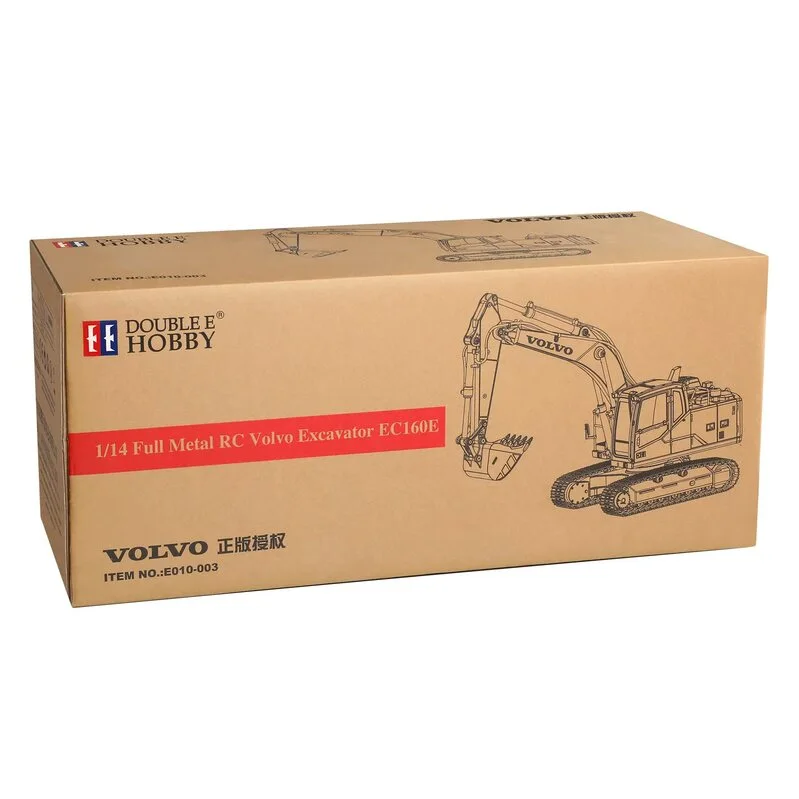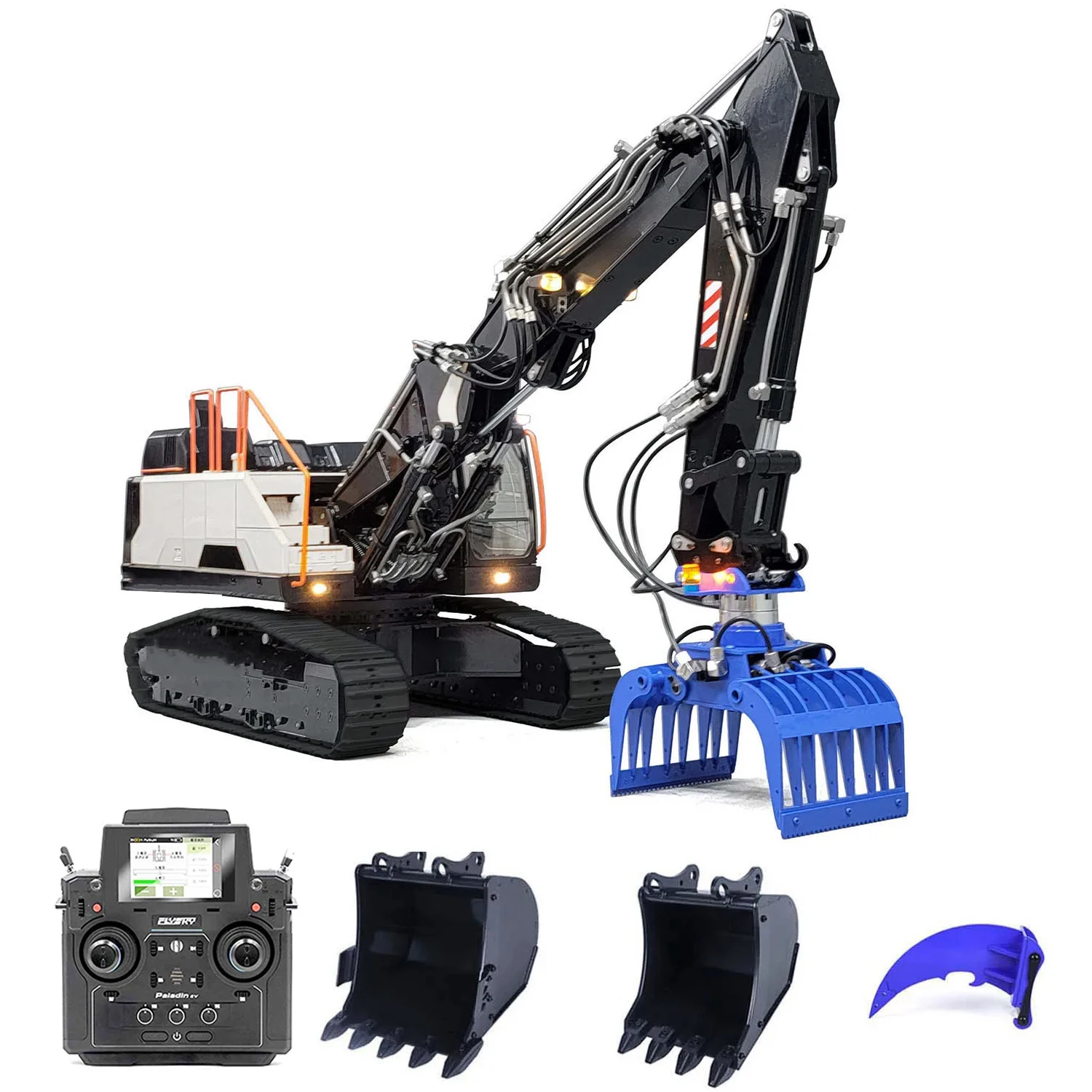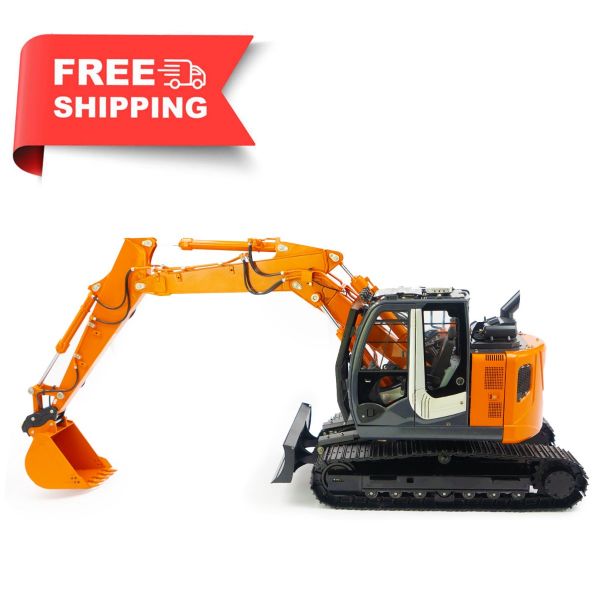The Necessary Features of Excavator That Make It a Must-Have Tool
Excavators are crucial in the construction and landscaping markets. Their functional add-ons enable a variety of jobs, from excavating to demolition. In addition, they boast exceptional digging deepness and reach, powered by durable engines. Driver convenience and small styles improve functionality in various environments. What truly establishes excavators apart are their advanced hydraulic systems and resilience. Understanding these attributes can make clear why they are thought about essential devices on any kind of job website.
Functional Attachments for Boosted Functionality
Although excavators are effective machines on their very own, the addition of flexible add-ons substantially enhances their functionality. These accessories transform a standard excavator right into a multi-purpose device, suitable for a selection of tasks. Buckets, for instance, been available in numerous sizes and shapes, enabling operators to dig, scoop, and move materials successfully. Hydraulic thumbs can be included for enhanced gripping and handling of cumbersome things, such as logs or rocks.Furthermore, specialized attachments like augers and breakers permit for boring and demolition work, broadening the excavator's utility on construction websites. remote control excavator. Grapples are one more alternative, perfect for relocating and arranging particles. This adaptability not only raises performance however additionally minimizes the need for multiple equipments, conserving time and prices. By outfitting excavators with the appropriate add-ons, drivers can tackle diverse tasks, making them important in the building and construction industry
Superior Excavating Deepness and Reach
Excavators are made with premium digging deepness and reach, permitting them to navigate in limited rooms and accessibility hard-to-reach areas. This ability is crucial for different building and excavation jobs, where typical machinery might drop short. With flexible boom arms and extendable tracks, excavators can conveniently browse irregular surface while preserving stability.The excavating depth can differ considerably amongst models, usually ranging from 10 to 25 feet, depending upon the style and purpose. This attribute enables drivers to dig deep into foundations, trenches, and various other deep structures effectively. Additionally, the reach of an excavator enables for precise digging and material handling without rearranging the machine regularly, conserving time and labor costs.Ultimately, the premium digging deepness and reach of excavators make them vital for professionals seeking to complete complex jobs with accuracy and effectiveness. Their versatility boosts performance on work websites, showcasing them as an essential tool in contemporary building and construction.
Powerful Engine Efficiency

When it pertains to performance and performance on construction sites, powerful engine performance plays a pivotal role in the capabilities of an excavator. A durable engine generates substantial horse power, allowing the machine to tackle durable jobs easily - remote control excavator. This toughness equates into faster cycle times, allowing operators to total jobs more quickly.Additionally, effective engines provide the essential torque to manage tough terrains and differed loads, making certain that the excavator can perform effectively under various problems. Whether it is lifting, digging, or relocating products, the engine's efficiency directly influences the total functional efficiency of the machine.Furthermore, innovations in engine innovation have led to enhanced fuel efficiency, lowering functional expenses while preserving power result. Inevitably, the engine's efficiency functions as the backbone of an excavator, affirming its standing as a crucial tool in the construction industry
Advanced Hydraulic Equipments

Boosted Lifting Capacity
A considerable improvement in lifting capacity can be connected to innovative hydraulic systems located in modern excavators. These systems utilize high-pressure fluid to create higher force, allowing drivers to lift heavier lots with ease. The engineering behind these hydraulics guarantees peak efficiency, supplying a remarkable power-to-weight ratio that improves overall efficiency. As a result, excavators can take on requiring jobs, such as lifting large products or equipment, without compromising security. Additionally, the durable layout of hydraulic elements adds to raised sturdiness and dependability, making them suitable for various construction atmospheres. This improved training ability not just lowers the moment needed for projects but likewise reduces the need for added equipment, proving crucial for both performance and cost-effectiveness in the building and construction market.
Improved Accuracy Control
Although typical excavators usually battled with accuracy, modern hydraulic systems have actually changed control systems, enabling operators to carry out jobs with amazing precision. These innovative systems utilize symmetrical control shutoffs that enable for smoother and much more receptive activities, substantially lowering the margin for mistake. Operators can currently carefully tune the excavator's activities, making it much easier to browse limited spaces and handle fragile products. Boosted responses systems even more notify drivers of real-time performance, making certain suitable sychronisation in between the equipment and operator. This boosted precision not only enhances performance but also improves security on work websites, lessening the risk of accidents. As a result, modern-day excavators geared up with sophisticated hydraulic systems are very useful devices for construction and excavation jobs requiring thorough precision.
Operator Comfort and Visibility
Operator convenience and presence are essential parts in the layout of contemporary excavators (remote control excavator). Functions such as ergonomic seat style, enhanced presence choices, and reliable control formats substantially enhance the operator's experience and efficiency. Prioritizing these facets warranties that drivers can function efficiently and safely in numerous problems
Ergonomic Seat Design
Convenience and exposure are extremely important in excavator style, with the ergonomic seat playing a necessary function in enhancing the driver's experience. An ergonomic seat is engineered to sustain the driver's body, minimizing exhaustion throughout lengthy hours of operation. Adjustable attributes, such as seat elevation, back-rest angle, and lumbar support, provide to specific preferences and advertise optimal position. These adjustments improve convenience and enable the operator to preserve concentrate on tasks without discomfort. Additionally, a well-designed seat can supply better lateral support, enabling smoother maneuvering when the excavator is in procedure. This additional reading thoughtful design not only enhances productivity but also adds to overall security, guaranteeing that drivers can execute their duties properly and successfully.
Boosted Visibility Features
The style of an excavator expands past just the seat, with boosted exposure features playing a substantial role in operator convenience and general safety and security. Large windows and tactically located mirrors give operators with a clear view of their environments, lessening unseen areas. This layout consideration permits better spatial recognition, which is crucial in hectic job environments. In addition, many excavators include rearview cameras and progressed surveillance systems that aid operators in navigating tight areas. The integration of these exposure features not just promotes security but additionally minimizes driver exhaustion by allowing much easier tracking of workplace. Inevitably, enhanced exposure adds to more efficient operations and aids double e volvo rc excavator guarantee that excavators can execute their tasks successfully and securely.
Control Design Efficiency
While maneuvering complicated job websites, an effective control layout considerably improves both operator convenience and presence. A well-designed control configuration warranties that drivers can access crucial features with marginal effort, lowering exhaustion during long hours. Ergonomic joystick positionings and user-friendly button setups permit smooth procedure, allowing drivers to maintain emphasis on the task at hand. In addition, clear exposure of both the workplace and the control panel is crucial for security and accuracy. Modern excavators commonly include flexible seating and control settings to fit various driver choices, better boosting comfort. Ultimately, a thoughtfully created control design not only boosts efficiency yet additionally fosters a more secure working setting by permitting operators to respond swiftly to changing conditions.
Compact Layout for Urban Environments
As urban construction sites typically face area restrictions, a portable style ends up being vital for excavators operating in these settings. These equipments are crafted to browse limited areas, enabling efficient ability to move in crowded job sites. A minimized footprint allows them to function very closely to existing structures, lessening disruption and making the most of productivity.The portable design typically consists of much shorter tracks and a tighter transforming distance, helping with operation in narrow alleys and restricted areas. Light-weight products add to ease of transportation, making it less complex to relocate the excavator from one area to another within the urban landscape.Additionally, lots of portable excavators are geared up with features such as extendable arms and flexible attachments, enhancing their performance while preserving a small dimension. This adaptability permits drivers to deal with a variety of jobs, from excavating to demolition, all while fitting perfectly into the restraints of city settings.

Toughness and Upkeep Considerations
Toughness stands as a crucial consider the efficiency and durability of excavators, especially in demanding city settings. These devices are subjected to strenuous conditions, including differing soil kinds, extreme temperature levels, and high-frequency usage. Top notch materials and robust building are required for ensuring that excavators can hold up against these difficulties without compromising functionality.Regular upkeep is equally vital in protecting sturdiness. Scheduled inspections, timely oil changes, and the substitute of used components contribute considerably to an excavator's life expectancy. Operators must also focus on hydraulic systems, tracks, and undercarriages, as these components typically bear the impact of wear and tear.Investing in durable excavators with substantial upkeep strategies enhances dependability and decreases downtime, inevitably resulting in raised performance on construction websites. Therefore, comprehending the interaction between durability and upkeep is essential for anybody thinking about the procurement of an excavator explanation for urban jobs.
Regularly Asked Questions
Just How Do Excavators Compare to Other Construction Devices?
Excavators attract attention among construction tools due to their flexibility, allowing jobs such as excavating, grading, and lifting. Contrasted to others, their hydraulic capacities use higher performance and power, making them indispensable on different job websites.
What Safety Features Are Consisted Of in Modern Excavators?
Modern excavators integrate different security functions, including rollover protection systems, alarms, and advanced exposure enhancements. These aspects interact to lessen threats, ensuring operator security while boosting effectiveness on building and construction websites and various other demanding atmospheres.

Can Excavators Be Utilized in Winter Months Issues?
Excavators can without a doubt be used in winter season conditions, supplied they are furnished with appropriate winter add-ons and precautions are taken. Appropriate upkeep and changes boost their efficiency, ensuring efficient procedure regardless of tough climate conditions.
What Is the Average Lifespan of an Excavator?
The typical life expectancy of an excavator usually varies from 7,000 to 10,000 hours of operation. This duration can substantially depend upon upkeep practices, operating problems, and the particular design's longevity and design attributes.
Just how Do I Select the Right Excavator Dimension for My Task?
Selecting the ideal excavator size entails assessing task scope, website problems, and material kinds. Consider factors like reach, depth needs, and weight ability to assure optimal effectiveness and safety and security during procedure. Dimension matters significantly in project success. Furthermore, the reach of an excavator permits for exact digging and product handling without rearranging the equipment regularly, saving time and labor costs.Ultimately, the exceptional digging deepness and reach of excavators make them crucial for experts looking for to finish complex jobs with accuracy and efficiency. Comfort and presence are paramount in excavator design, with the ergonomic seat playing a crucial duty in improving the operator's experience. The layout of an excavator prolongs past just the seat, with improved presence attributes playing a considerable role in operator comfort and total safety and security. Modern excavators typically integrate adjustable seats and control settings to accommodate various driver choices, better boosting comfort. Lightweight products contribute to reduce of transportation, making it simpler to relocate the excavator from one area to another within the metropolitan landscape.Additionally, numerous portable excavators are outfitted with attributes such as flexible accessories and extendable arms, enhancing their capability while keeping a small dimension.